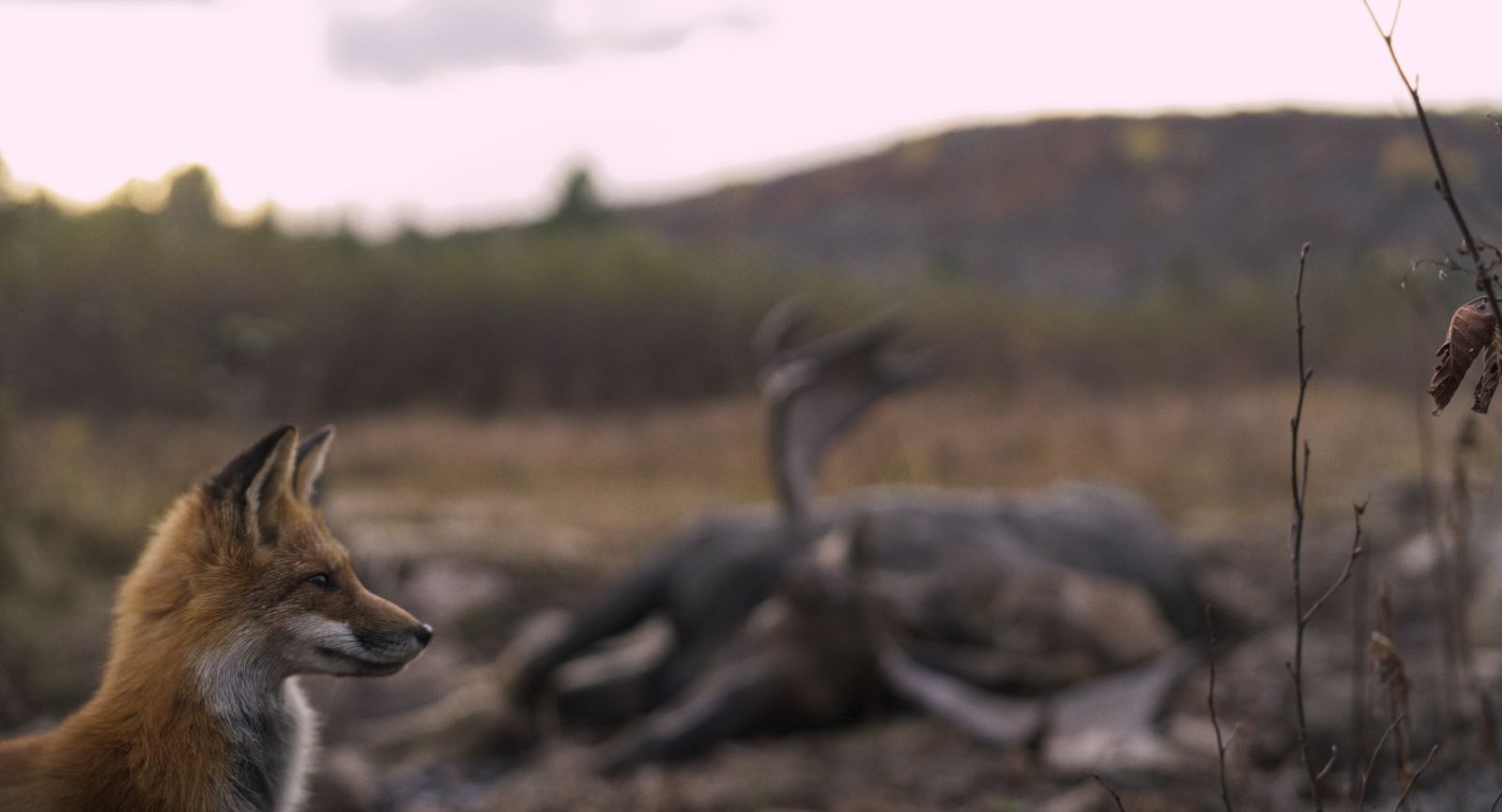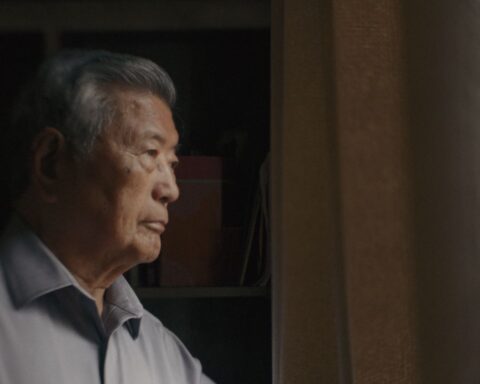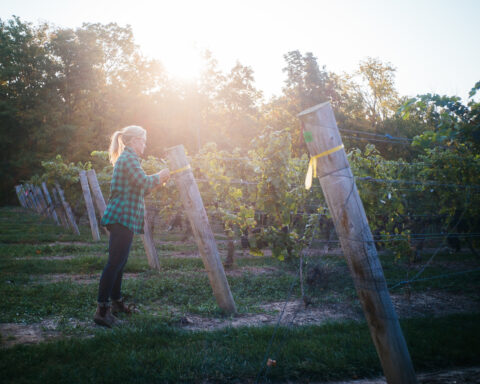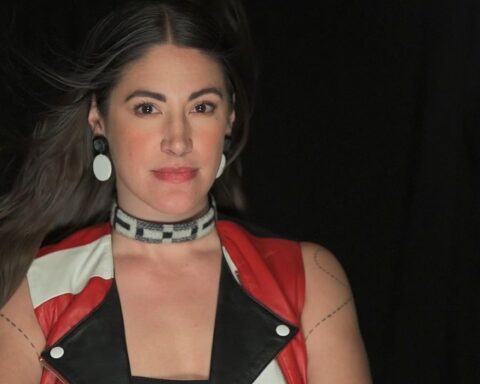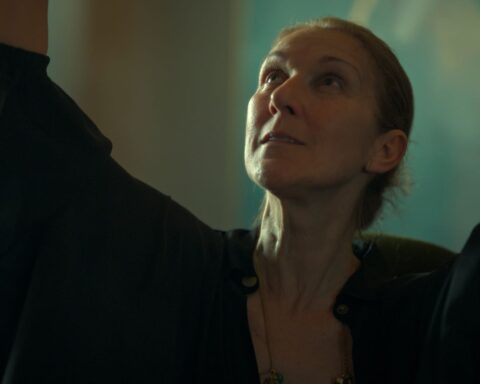Wild Feast (Féstin boréal)
(Canada, 75 min.)
Dir. Robert Morin
Within the Outaouais and Abitibi-Témiscamingue regions, Vérendrye Park welcomes its clientele to a lively reconnection with nature. Activities such as hiking, canoeing, and berry picking are common escapades. In the summertime, the nearby archipelago offers a safe space for civilians to swim in the region’s vast lakes. The provincial park also serves as the primary location for Robert Morin’s latest film. Straying away from a humanitarian presence, Wild Feast documents the beauty and brutality of the region’s biology. Morin isn’t interested in talking heads or the hiring of A-list talent for overlaid narration. Wild Feast is a playfully avant-garde experiment, as Morin strongly prefers natural ambience over an interruptive human presence.
The film’s ecological design is anchored with a macabre premise. Wild Feast isn’t a documentary for the faint of heart, as Morin and his Québécois crew recreate the senseless killing of a lonesome moose. To achieve the illusion of a flowing narrative, the filmmakers contextualize their archive in the edit. Animatronic re-creation perfectly intertwines with the footage of a wandering moose. Fast cutting accelerates the intensity of the nocturnal killing. With a hard cut to black, Morin commences the decomposition cycle. For a film that begins with the ruthlessness of humanity’s hunting obsession, Wild Feast gradually evolves into a remarkable portrayal on the circle of life.
Shot over the span of three years, Morin and his crew required seven different carcasses to achieve their deception of the moose’s death. The shooting method is oddly reminiscent of Jerzy Skolimowski’s EO (2022) — a narrative feature that required six different identical donkeys to achieve the artistic vision of one donkey journeying the wheel of fortune in a tale inspired by Robert Bresson’s Au Hasard Balthazar (1966). Morin notably recreated antlers to maintain continuity in Wild Feast. The dedication to the form gleams in every shot and demonstrates the unpredictability of nature in vivid detail. Even with the team’s constant preparation, the documentary embraces the chaos of the animal kingdom. Throughout the film, we bear witness to different animals who snack on the remnants of the moose, ranging from larger than life mammals to microscopic maggots.
The dedication behind the camera offers a patient viewing experience. In one harrowing scene, the camera captures a unique interaction between a black bear and the moose. A ritual progresses with the bear slowly dismembering and preserving the body for hibernation. Winter is on its way. Snow gently fades into frame. To achieve the natural progression of time, Morin frames his film chronologically. The decomposition begins in autumn, and the cycle eventually ends in spring. There’s a satisfying structure to the simplistic narrative that strips the conflicts within the habitat to the base-level. The documentary thinks outside the box, bringing the camera closer to the evolving landscape with extreme close-ups.
Wild Feast also implements infrared cameras to capture interactions in pitch darkness. Through hidden cameras, Morin showcases the disputes of the land. The carcass of the moose is a hot commodity, as coyotes fend their precious prize from raccoons and rabbits. In brief segments, cinematographer Thomas Leblanc Murray utilizes ultra-wide lenses to personify the point of view of the animals. The best implementation of the technique captures a turtle’s swim through the archipelago. Cutting back and forth from the headspace of the turtle, Morin creates a captivating relationship between the spectator and the animal subject. The effect is visceral, with the technique used sparingly. Whereas the subject matter doesn’t offer anything new to the table within the context of nature documentaries, the harrowing footage and observational direction satisfies with its innovative aesthetic.
In an age where most conventional nature documentaries would aim for narration and exposition, Wild Feast only features one line of dialogue. In the scene, an Indigenous man drives a snowmobile near the carcass. The man observes the body of the moose. He drinks a hot beverage as he sips from a tiny cup. He pours the remainder of his beverage by the grave. In one assertive word, he states: “godspeed.” The jarring use of dialogue emphasizes the cycle of life and death. Morin subtly explores the dynamics of mortality through the power of the cinematic form. The images speak louder than words. By the time the credits roll, Wild Feast offers a nuanced perspective to a familiar subject. The film weaponizes its observational traditions, cutting steadily with purpose. Time lapses and long-takes elongate the cycle. The restless documentary provides a different kind of feast to its viewer: an atmospheric meal prepared by the grace of Mother Nature.




